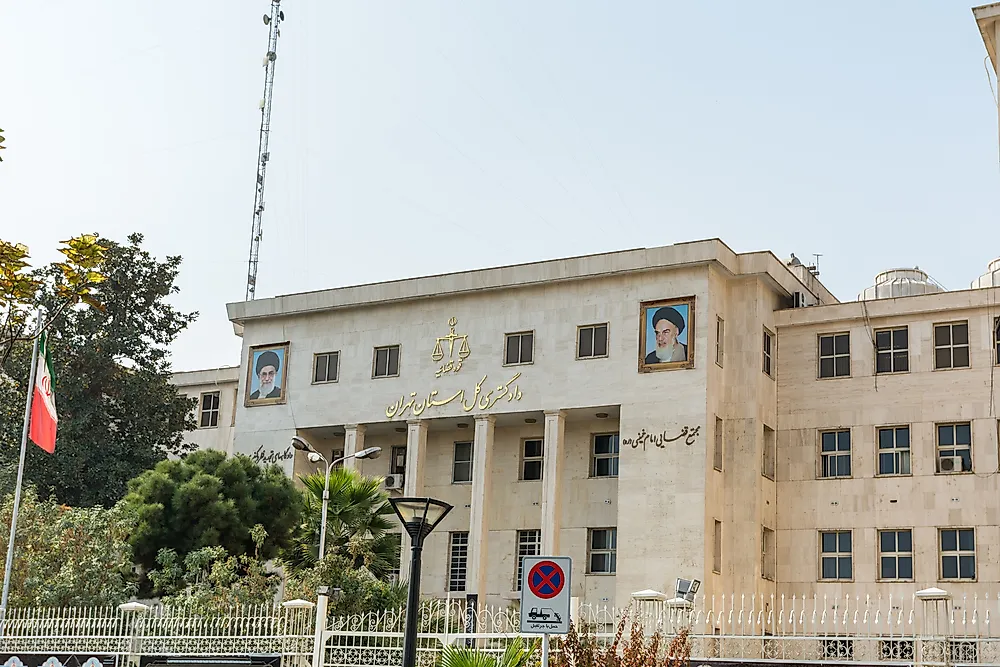What Type Of Government Does Iran Have?

Iran is a Middle-Eastern country also known as the Islamic Republic of Iran and has a theocratic government, in which most policies are based on Islamic religious ideologies. The political structure of the country comprises of the supreme leader, the executive, the legislature, the judiciary, and other institutions such as the Assembly of Experts, the Expediency Discernment Council, and the City and Village Councils of Iran. The country follows a constitution that was ratified by referendum in 1979, and later amended in 1989. The Iranian constitution outlines and defines the political, economic, and social structure of the country. The supreme leader of the Islamic Republic is the ruler and the Commander-in-Chief of the country.
History And Context
In 1979, the Pahlavi Dynasty was overthrown in a revolution, leading to the establishment of the Islamic Republic of Iran, with the leader of the Revolution becoming the supreme leader of the new republic. The Islamic Republic was installed after a referendum following the revolution’s victory, whereby citizens were asked to vote for or against the Republic, with 98.2% voting in favor. In the same year, 1979, Iranians ratified a new constitution by referendum. In 1989, the constitution was amended through another referendum. The constitution contains theocratic as well as democratic elements. Democratic elements, however, are subject to the Supreme Leader and the Guardian Council.
Supreme Leader Of The Government Of Iran
The position of Supreme Leader was established by Iran’s Constitution in Article 5. In addition to being the Commander in Chief, the Supreme Leader is the head of state, and the superintendent of the three arms of government, that is the executive, the legislature, and the judiciary. The Supreme Leader’s tenure lasts until his death. The country has had only two Supreme Leaders, with the current one being Ayatollah Ali Khameini
Executive Branch Of The Government Of Iran
The President, who is elected by the people, is the head of government and answers to the Supreme Leader. The President’s functions include the signing of treaties with other nations, budget, administering national planning, state employment affairs, and appointing Cabinet Ministers with Parliament’s approval. His term is limited to no more than two four-year terms. The current President is Hassan Rouhani. Iran’s cabinet is chosen and led by the President. Cabinet meetings are chaired by the President.
Legislative Branch Of The Government Of Iran
Iran’s legislature comprises of two houses the Islamic Consultative Assembly and the Guardian Council. The Consultative Assembly comprises peoples’ representatives directly elected by the country’s citizenry through secret ballot. The Guardian Council is the upper house, reviews legislation done by the Consultative Assembly with the intention of determining its compatibility with the principles of either Islam or the Constitution. It comprises 12 members, one-half of which are selected by the Supreme Leader, with the other half being jurists elected by the Consultative Assembly from a list of Muslim jurists nominated by the Chief Justice.
Judiciary Of Iran
The Chief Justice is the head of the Judiciary in Iran, who is appointed by the Supreme Leader. The Chief Justice serves a five-year term. His responsibilities include establishing an organizational structure for the Judiciary and drafting judiciary bills for parliament he also hires, fires, promotes, and assigns judges. Judges in Iran have a right to trial before dismissal. Judicial authority is vested in the Supreme Court and the High Council of the Judiciary. The Minister of Justice, though appointed by the President, must be chosen from a list of proposed candidates provided by the Chief Justice. Iranian Courts include Revolutionary Courts, Courts of Peace, Public Courts, and Supreme Courts of Cassation.
Other Institutions
Additional government institutions in Iran include the Assembly of Experts, the Expedience Discernment Council, and the City and Village Councils of Iran. Though to the rest of the world, Iran seems to have an undemocratic system of government, Iran’s political structure is, in fact, democratic, though intermixed with elements of theocracy. There is a clear delineation of the roles of the various arms of government.











